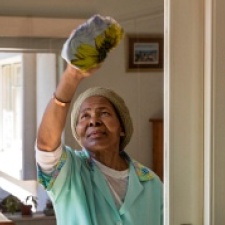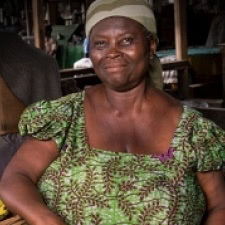Advanced Search
Search Results
333 results found
This brief compiles statistics on street vendors and market traders in 12 countries: Brazil, Chile, El Salvador, Ghana, India, Mexico, Peru, Senegal, South Africa, Thailand, Türkiye and Uganda. In most of the countries, the overwhelming majority of market traders and an even higher share of street...
This report draws on the experiences and efforts of organizations of waste pickers to develop and make data on them available to policymakers and others. It describes the data collection projects in three cities and one country – Bogotá, Colombia; Pune, India; New York City, USA; and South Africa...
The 2022-2023 Annual Report details WIEGO's 8th General Assembly and describes the goals of our five-year strategic plan. It highlights the main achievements of WIEGO’s work and how WIEGO supports workers in informal employment.
This flyer examines data that reveal the COVID-19 pandemic’s effects on employment in Mexico. It focuses on six worker groups: domestic workers, home-based workers, market traders, street vendors, informal construction workers and informal transport workers. Data in this snapshot are derived from...
New study from WIEGO shows 90% of waste pickers surveyed across Brazil have experienced climate-change-related extreme weather events Public Ministry of Minas Gerais signs commitment to build climate resilience for waste pickers WIEGO urges Minas Gerais government and private sector to strengthen...
Catadores e catadoras obtêm apoio governamental para aumentar sua resiliência às mudanças climáticas
Um novo estudo realizado pela WIEGO mostra que 90% dos catadores e catadoras entrevistados em diferentes regiões do Brasil sofreram com eventos meteorológicos extremos relacionados às mudanças do clima Ministério Público de Minas Gerais assina compromisso para desenvolver resiliência climática entre...
Brazilian study shows why waste pickers are essential to climate adaptation planning. More than 90% of waste pickers surveyed across Brazil have experienced climate change-related extreme weather events in the last year, with many reporting negative impacts on their health, earnings and ability to...
Estudo brasileiro mostra por que os catadores e as catadoras são essenciais para o planejamento da adaptação climática. Mais de 90% dos catadores entrevistados e das catadoras entrevistadas em todo o Brasil sofreram eventos climáticos extremos relacionados às mudanças climáticas no último ano, com...
COVID-19 and the steps taken by the Government to prevent its spread had significant adverse impacts on employment in India. This brief is based on data from the Periodic Labour Force Survey, an annual survey with provision for quarterly estimates conducted by the National Sample Survey Office of...
Videos / Slideshows / Audio
Millions of women work long hours, in dangerous conditions, for little pay. They are fighting for change, with the help of ILO Convention 189 on Decent Work for Domestic Workers. Watch this video to learn how.
Workers Education/Organizing Materials
This manual helps street vendors learn more about the regulations that govern public space and how to defend the right to work in public space. It describes successful actions taken by street vendor organizations. And it offers information to help you organize and negotiate with local government.
WIEGO Working Papers
Mike Rogan reviews how informal workers are taxed, why there is growing interest in taxing them, and whether they should be included in the tax net.



